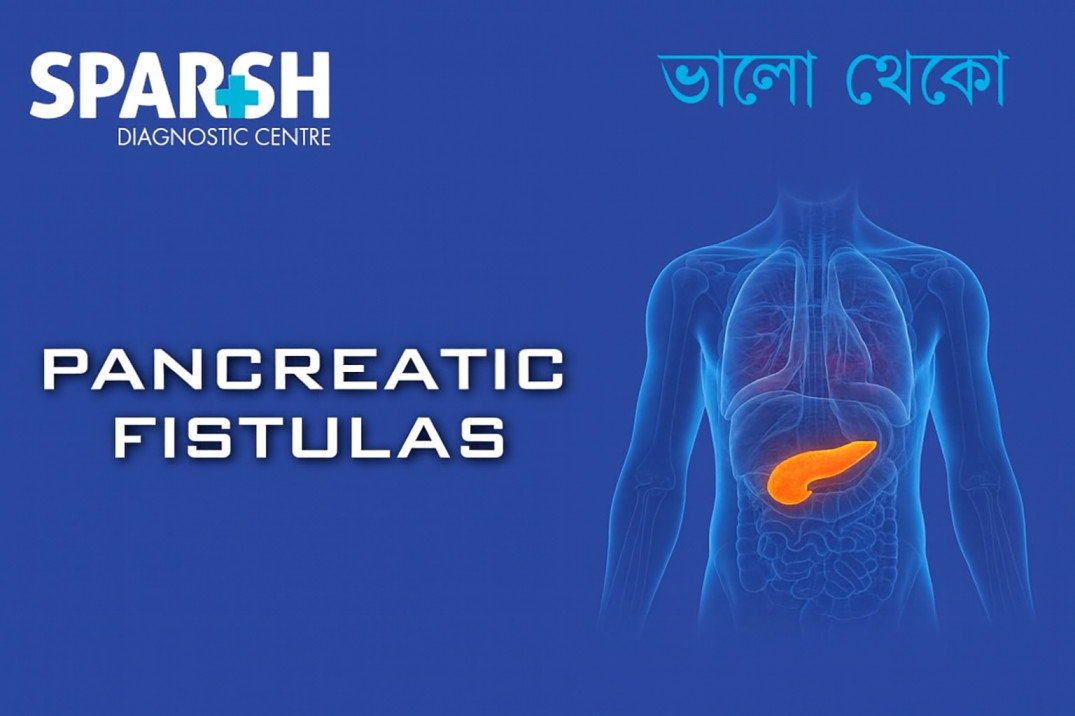Pancreatic fistulas represent a significant clinical challenge, often arising as complications after pancreatic surgery or due to severe pancreatitis. These abnormal connections between the pancreas and other organs or tissues can lead to leakage of pancreatic enzymes, causing inflammation, infection, and systemic complications. This blog provides a detailed overview of pancreatic fistulas, covering their etiology, clinical presentation, diagnostic strategies, treatment modalities, and long-term outcomes.
What Is a Pancreatic Fistula?
A pancreatic fistula is an abnormal communication between the pancreatic ductal system and another epithelial surface, such as the skin, peritoneal cavity, or hollow viscera. It results in the leakage of pancreatic secretions, which are rich in digestive enzymes and can cause significant tissue damage.
Pancreatic fistulas are classified into:
- External fistulas: Drain pancreatic fluid to the skin surface.
- Internal fistulas: Leak into adjacent organs or body cavities.
Causes and Risk Factors
Pancreatic fistulas typically develop due to:
- Postoperative complications: Especially after pancreaticoduodenectomy (Whipple procedure), distal pancreatectomy, or trauma-related surgeries.
- Acute or chronic pancreatitis: Inflammation can erode ductal walls, forming fistulas.
- Pancreatic trauma: Blunt or penetrating injuries may disrupt ductal integrity.
- Pancreatic neoplasms: Tumors can obstruct ducts or invade surrounding tissues.
- Endoscopic procedures: ERCP or stenting may inadvertently damage ducts.
Risk factors include poor nutritional status, infection, high-output drainage, and underlying pancreatic disease.
Symptoms and Clinical Presentation
The symptoms of pancreatic fistulas vary depending on their location and output:
- Abdominal pain: Often persistent and localized.
- Fever and chills: Indicative of infection or abscess formation.
- Nausea and vomiting
- Drainage of pancreatic fluid: Seen in external fistulas.
- Signs of sepsis: In severe cases with systemic involvement.
- Malabsorption and weight loss: Due to enzyme loss and digestive impairment.
Internal fistulas may present with ascites, pleural effusion, or gastrointestinal bleeding depending on the site of leakage.
Diagnostic Evaluation
Timely diagnosis is crucial to prevent complications. Diagnostic tools include:
- Clinical examination: Inspection of surgical wounds or drainage sites.
- Laboratory tests:
- Elevated amylase and lipase levels in drainage fluid.
- Leukocytosis and elevated CRP in infections.
- Imaging studies:
- CT scan: Identifies fluid collections, abscesses, and fistula tracts.
- MRI/MRCP: Offers detailed ductal anatomy.
- Ultrasound: Useful for superficial fluid collections.
- ERCP: Visualizes ductal disruptions and allows therapeutic interventions.
Treatment Approaches
Management depends on the fistula type, output volume, and associated complications.
Conservative Management
- Nutritional support: Total parenteral nutrition (TPN) or enteral feeding to reduce pancreatic stimulation.
- Somatostatin analogs: Octreotide reduces pancreatic secretions.
- Drainage: Percutaneous or surgical drainage of fluid collections.
- Antibiotics: For infected fistulas or abscesses.
Endoscopic Therapy
- Stenting: ERCP-guided stent placement across ductal disruptions.
- Sphincterotomy: Facilitates drainage and healing.
Surgical Intervention
Indicated when conservative measures fail or complications arise:
- Fistula excision
- Pancreatic resection
- Anastomosis repair
- Debridement of necrotic tissue
Surgical management carries risks and requires careful patient selection.
Prognosis and Complications
The prognosis of pancreatic fistulas varies:
- Low-output fistulas often close spontaneously with conservative care.
- High-output or complex fistulas may persist and require surgery.
Potential complications include:
- Infection and abscess formation
- Sepsis
- Malnutrition
- Electrolyte imbalance
- Delayed wound healing
- Pancreatic insufficiency
Early diagnosis and multidisciplinary care improve outcomes.
Prevention Strategies
Preventive measures focus on minimizing surgical trauma and managing pancreatitis effectively:
- Meticulous surgical technique
- Prophylactic use of somatostatin analogs
- Adequate drainage post-surgery
- Early nutritional support
- Monitoring for early signs of leakage
Long-Term Management
Patients with pancreatic fistulas may require:
- Regular follow-up imaging
- Nutritional rehabilitation
- Pancreatic enzyme supplementation
- Management of diabetes or exocrine insufficiency
Psychosocial support and patient education are vital for recovery and quality of life.
Frequently Asked Questions (FAQ)
Q1: What is the difference between internal and external pancreatic fistulas?
A1: Internal fistulas leak pancreatic fluid into body cavities or organs, while external fistulas drain to the skin surface.
Q2: How is a pancreatic fistula diagnosed?
A2: Diagnosis involves clinical evaluation, fluid analysis for amylase/lipase, and imaging studies like CT or ERCP.
Q3: Can pancreatic fistulas heal on their own?
A3: Low-output fistulas may close spontaneously with conservative treatment, but high-output or complex ones often need intervention.
Q4: What are the risks of untreated pancreatic fistulas?
A4: Risks include infection, sepsis, malnutrition, and chronic pancreatic insufficiency.
Q5: Is surgery always required for pancreatic fistulas?
A5: No, many cases respond to medical and endoscopic treatment. Surgery is reserved for persistent or complicated fistulas.
Q6: How long does it take for a pancreatic fistula to heal?
A6: Healing time varies from weeks to months depending on severity, treatment, and patient health.
Q7: What dietary changes are recommended?
A7: Low-fat, high-protein diets with enzyme supplementation may help reduce pancreatic stimulation and support healing.
Q8: Are pancreatic fistulas life-threatening?
A8: They can be if associated with sepsis or organ failure, but most are manageable with timely care.
Pancreatic fistulas are complex but treatable conditions that require a multidisciplinary approach. Early recognition, appropriate imaging, and tailored therapy—ranging from conservative management to surgical repair—are essential for optimal outcomes. With vigilant care and patient education, many individuals recover fully and regain quality of life.
#BhaloTheko
Disclaimer:
No content on this site, regardless of date, should ever be used as a substitute for direct medical advice from your doctor or other qualified clinician.

![]()





